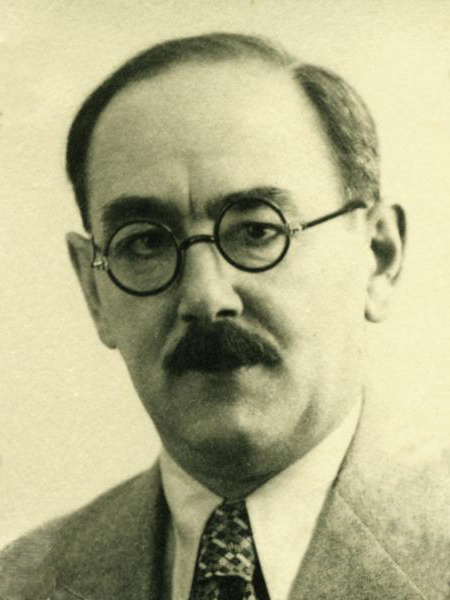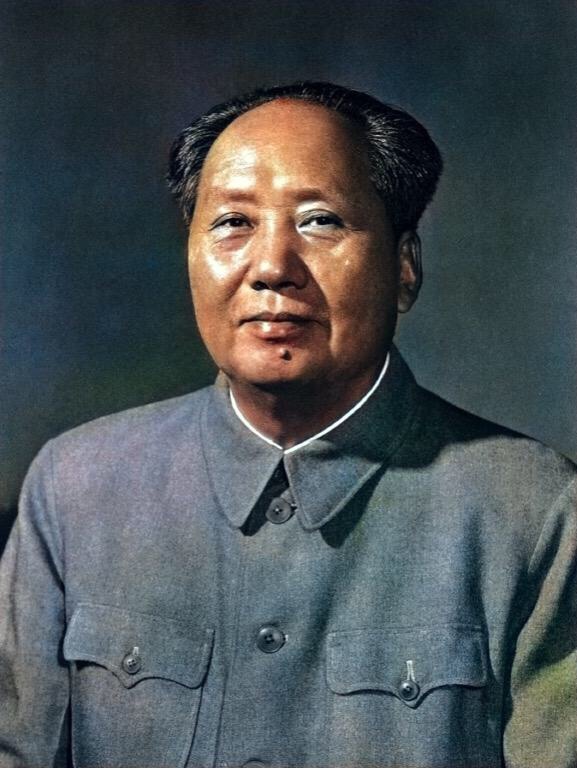6 December 1956 saw one of the most violent and politically-charged sporting clashes in history, an event that came to be known as ‘ Blood in the Water ’. The occasion was the Olympic water polo semi-final between Hungary and the USSR. Played against the backdrop of Cold War politics, the game was, from start to finish, fraught with tension.
Water Polo
Hungary was the undoubted superpower of 1950s water polo. They had won gold at three of the four previous Olympic Games, and silver at the London Olympics of 1948; and were firm favourites to triumph again at the Melbourne Olympics of 1956, the first Olympics to be held in the southern hemisphere. The Soviets, jealous of Hungary’s success in the water, had been training in Hungary in the months leading up to the Olympics, trying to learn what made the Hungarians so good at their game. Since 1949, Hungary had been a Soviet satellite and thus the Soviet team arrived, uninvited, and made use of Hungary’s pool facilities and expertise. A ‘friendly’ match in Moscow earlier in the year had erupted in violence; the Russians having won thanks to some dubious partisan referring.

Then, in October 1956, came the
Hungarian Revolution. The people of Hungary stood up to the oppression of a tyrannical and foreign ruler. The Soviet leader,
Nikita Khrushchev, sent in the tanks to quell the uprising and restore order. The tanks, having failed, were withdrawn. Khrushchev replaced Hungary’s hard-line communist rulers with the more populist
Imre Nagy (pictured). Nagy announced his decision to withdraw Hungary from the Soviet-led Warsaw Pact, introduce much-needed reform and, most alarmingly for Khrushchev, spoke of independence.
A week later, the Soviet tanks re-appeared and, this time, with brutal efficiency, crushed the revolution. Some 3,000 Hungarian citizens were killed. Nagy took sanctuary in the Yugoslav embassy but, a year later, having been lured out, was arrested by the new pro-Soviet regime in Budapest, tried and executed.
Meanwhile, while the Hungarian Revolution played out, the national Olympic water polo team had been holed up with Russian minders in a hillside hotel in Budapest within earshot of the gun battles raging below. On 1 November they started on their three-week journey to Melbourne not knowing the outcome of the uprising. It was only when they arrived in Australia, that they learnt that their oppressive rulers were back in charge (and would remain so for another 33 years). It was at this point that many of the players decided that, once the Olympics were over, they would not be returning to their homeland.
They won their first four games of the tournament against Great Britain, the USA, Italy and Germany. And so they reached the semi-final to face the team that represented their oppressors. The scene was set for a tumultuous confrontation – blood in the water.
Blood in the Water
The game took place on 6 December. The Hungarian team had decided from the off to conduct a psychological battle by needling their opponents. Having been forced to learn the Russian language two hours a day throughout their school years, the Hungarian players could easily make themselves understood as they mocked their opponents’ illegitimacy. Within the first minute of the heavily-charged grudge match, the referee had consigned a Russian player to the penalty box.

Fights continued throughout the game, both above and below the water line. Together with their method of zonal marking, a revolutionary tactic for the time, the Hungarians had the Soviets quickly ruffled.
The Australian crowd’s sympathy clearly lay with the Hungarians, chanting ‘Go Hungary’ throughout the game and waving the Hungarian flag with the Soviet emblem ripped from its centre. (The Australian team had been beaten by the USSR earlier in the tournament).
With the match drawing to its close, the score was 4-0 to Hungary. In the last couple of minutes, Hungary’s star player, the 21-year-old Ervin Zador, was assigned by his captain to mark the Soviet forward, Valentin Prokopov. Zador had already scored two of Hungary’s goals. On hearing the referee blow his whistle, Zador made what he called a ‘horrible mistake’, and momentarily took his eye off the Soviet. He looked back to see Prokopov’s arm windmilling before being thumped a mighty blow that caught him in the eye and cheek. There was, indeed, blood in the water.
The Australian crowd went berserk and surged forward. The police, who had been told to expect trouble, hence their presence
at the game, stepped in. The referee blew full time a minute early while the police escorted the Soviet team away from the baying crowd. Ervin Zador was led from the pool with blood pouring from his face. A
photograph of the bloodied player has become an iconic image of Cold War-era Olympics.
Thus, having won, the Hungarian team advanced to the final against Yugoslavia. Zedor, although desperate the play, was unable to – his eye was too swollen. He nervously watched the game from the stands as his teammates triumphed, winning the final 2-1. He received his gold medal on the podium dressed in a suit. (The Soviets won their play-off match, beating Germany 6 -4, and hence earned the bronze medal).
San Francisco
Following the Olympics, Zador, along with half his teammates, sought asylum. It was, he said years later, a difficult decision – he was at the peak of his career and could look forward to a bright sporting future in Hungary. But the Soviet oppression was too much. Thus, he moved to the US and settled in San Francisco. Water polo in the US was not the sport it was in Hungary and, reluctantly, Zedor gave it up. Instead, he took up a job as a swimming instructor and trained a young Mark Spitz, who, at the Munich Olympics of 1972, won seven gold medals.
2006, the fiftieth anniversary of the Blood in the Water game, saw two cinematic releases based on the event – a documentary,
Freedom’s Fury, executively produced by Quentin Tarantino, no less, and narrated by Zedor’s former protégé, Mark Spitz; and an excellent Hungarian feature film,
Children of Glory.
Ervin Zador died 28 April 2012.
 Rupert Colley
Rupert Colley
Read more about the Hungarian Revolution in The Hungarian Revolution, 1956 (126 pages) available as ebook and paperback from Amazon, Barnes & Noble, Waterstones, Apple Books and other stores.
Like this:
Like Loading...
 Although talking to a foreigner was deemed a crime in China, the two men, chatting through an interpreter, found a rapport. Zedong gave the American a silk gown by way of a present and invited the American team to play a friendly championship in China. This seemingly innocuous invitation has to be seen in the context of the time – no American had stepped on Chinese soil since Chairman Mao (pictured) had come to power 22 years earlier in 1949. Time magazine called it “The ping heard round the world.”
Although talking to a foreigner was deemed a crime in China, the two men, chatting through an interpreter, found a rapport. Zedong gave the American a silk gown by way of a present and invited the American team to play a friendly championship in China. This seemingly innocuous invitation has to be seen in the context of the time – no American had stepped on Chinese soil since Chairman Mao (pictured) had come to power 22 years earlier in 1949. Time magazine called it “The ping heard round the world.” But the ultimate humiliation came on 12 April 1961, when the Soviet cosmonaut, Yuri Gagarin (pictured), became the first person in space in a round-the-world flight lasting 108 minutes. Originally, the flight was intended to take place on the 13th, but Soviet premier,
But the ultimate humiliation came on 12 April 1961, when the Soviet cosmonaut, Yuri Gagarin (pictured), became the first person in space in a round-the-world flight lasting 108 minutes. Originally, the flight was intended to take place on the 13th, but Soviet premier,  Read more about the Cold War in The Clever Teens’ Guide to the Cold War (75 pages) available as paperback and ebook from
Read more about the Cold War in The Clever Teens’ Guide to the Cold War (75 pages) available as paperback and ebook from  The End of Detente
The End of Detente Matyas Rakosi was born one of eleven children to Jewish parents on 9 March 1892 in a village called Ada, now in Serbia but then part of the Austrian-Hungary empire. He would later renounce his Judaism and all forms of religion. A polyglot, Rakosi could speak eight languages. He served in the Austrian-Hungarian army during the First World War, being taken prisoner on the Eastern Front by the Russians and held for years in a prisoner of war camp during which time he converted to communism. Returning home in 1918 as a member of the Hungarian Communist Party, he was given command of the Red Guard during the 134-day Hungarian Soviet Republic formed by Bela Kun in 1919. Following the collapse of the republic, Rakosi fled to Austria, then
Matyas Rakosi was born one of eleven children to Jewish parents on 9 March 1892 in a village called Ada, now in Serbia but then part of the Austrian-Hungary empire. He would later renounce his Judaism and all forms of religion. A polyglot, Rakosi could speak eight languages. He served in the Austrian-Hungarian army during the First World War, being taken prisoner on the Eastern Front by the Russians and held for years in a prisoner of war camp during which time he converted to communism. Returning home in 1918 as a member of the Hungarian Communist Party, he was given command of the Red Guard during the 134-day Hungarian Soviet Republic formed by Bela Kun in 1919. Following the collapse of the republic, Rakosi fled to Austria, then  The Prague Spring had been led by Czechoslovakia’s new communist party chairman, Alexander Dubcek, appointed in January 1968. Although claiming to be loyal to his Soviet masters in Moscow, Dubcek ushered in a period of political and cultural freedom unheard of in the previous twenty years of Czechoslovakian communist rule. The Soviet leadership, under Leonid Brezhnev (pictured), became increasingly concerned with what they considered Dubcek’s treachery and Czechoslovakia’s counterrevolution and demanded he reversed the reforms.
The Prague Spring had been led by Czechoslovakia’s new communist party chairman, Alexander Dubcek, appointed in January 1968. Although claiming to be loyal to his Soviet masters in Moscow, Dubcek ushered in a period of political and cultural freedom unheard of in the previous twenty years of Czechoslovakian communist rule. The Soviet leadership, under Leonid Brezhnev (pictured), became increasingly concerned with what they considered Dubcek’s treachery and Czechoslovakia’s counterrevolution and demanded he reversed the reforms. Richard Nixon was elected to the Senate in 1950, aged 36, where
Richard Nixon was elected to the Senate in 1950, aged 36, where  Then, in October 1956, came the
Then, in October 1956, came the  Rupert Colley
Rupert Colley